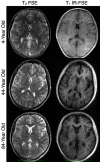Neuroimaging and verbal memory assessment in healthy aging adults using a portable low-field MRI scanner and a web-based platform: results from a proof-of-concept population-based cross-section study
- PMID: 36352153
- PMCID: PMC9646260
- DOI: 10.1007/s00429-022-02595-7
Neuroimaging and verbal memory assessment in healthy aging adults using a portable low-field MRI scanner and a web-based platform: results from a proof-of-concept population-based cross-section study
Abstract
Consumer wearables and health monitors, internet-based health and cognitive assessments, and at-home biosample (e.g., saliva and capillary blood) collection kits are increasingly used by public health researchers for large population-based studies without requiring intensive in-person visits. Alongside reduced participant time burden, remote and virtual data collection allows the participation of individuals who live long distances from hospital or university research centers, or who lack access to transportation. Unfortunately, studies that include magnetic resonance neuroimaging are challenging to perform remotely given the infrastructure requirements of MRI scanners, and, as a result, they often omit socially, economically, and educationally disadvantaged individuals. Lower field strength systems (< 100 mT) offer the potential to perform neuroimaging at a participant's home, enabling more accessible and equitable research. Here we report the first use of a low-field MRI "scan van" with an online assessment of paired-associate learning (PAL) to examine associations between brain morphometry and verbal memory performance. In a sample of 67 individuals, 18-93 years of age, imaged at or near their home, we show expected white and gray matter volume trends with age and find significant (p < 0.05 FWE) associations between PAL performance and hippocampus, amygdala, caudate, and thalamic volumes. High-quality data were acquired in 93% of individuals, and at-home scanning was preferred by all individuals with prior MRI at a hospital or research setting. Results demonstrate the feasibility of remote neuroimaging and cognitive data collection, with important implications for engaging traditionally under-represented communities in neuroimaging research.
Keywords: Brain MRI; Dementia; Diversity in health research; Low-field MRI; Remote data collection, aging; Web-based cognitive assessment.
© 2022. The Author(s), under exclusive licence to Springer-Verlag GmbH Germany, part of Springer Nature.
Conflict of interest statement
The authors declare that they have no competing interests.
Figures










References
MeSH terms
Grants and funding
LinkOut - more resources
Full Text Sources

